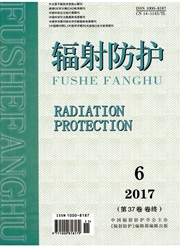

 中文摘要:
中文摘要:
乳腺是对辐射致癌最敏感的器官之一,2007年国际放射防护委员会(ICRP)将乳腺的组织权重因子由0.05提升为0.12,使乳腺剂量的准确评估变得更为重要。本文利用数学建模方法建立了精细乳房模型,包括输乳窦、输乳管、小叶和脂肪组织,模型体素化后与中国成年女性参考人体素模型进行了融合。利用该模型计算了光子AP照射时乳腺腺体的剂量转换系数,并与原来模型的计算结果进行对比。结果显示,光子能量较低时两个模型的计算结果相差30%,光子能量在0.03MeV以上时差别不大。
 英文摘要:
英文摘要:
Breast is one of the most sensitive organs to radiation. In 2007, ICRP increased the tissue weighting factor for the breast from 0.05 to 0. 12, which makes the accurate evaluation of breast dose more important. But in the human voxel phantom, the structure of breast is not elaborate enough because of the limitation of image resolution used for phantom modeling. This will probably affect the accuracy of breast dose calculated in simulation. A lot of research works on detailed breast modeling has been carried out in recent years internationally, but there is no research in this area in China. The model of detailed breast is established in this paper using mathematical modeling method. The model includes lactiferous sinuses, lactiferous ducts, 10bules and adipose tissue. Model is voxelized and then merges with Chinese reference adult female voxel model. This model is used to calculate dose conversion coefficients of breast gland for external photon exposures in AP geometry and results are compared with that calculated using old model. The results show that the difference between the results of two models is up to 30% at low photon energy. There is no much difference at high photon energies.
 同期刊论文项目
同期刊论文项目
 同项目期刊论文
同项目期刊论文
 期刊信息
期刊信息
